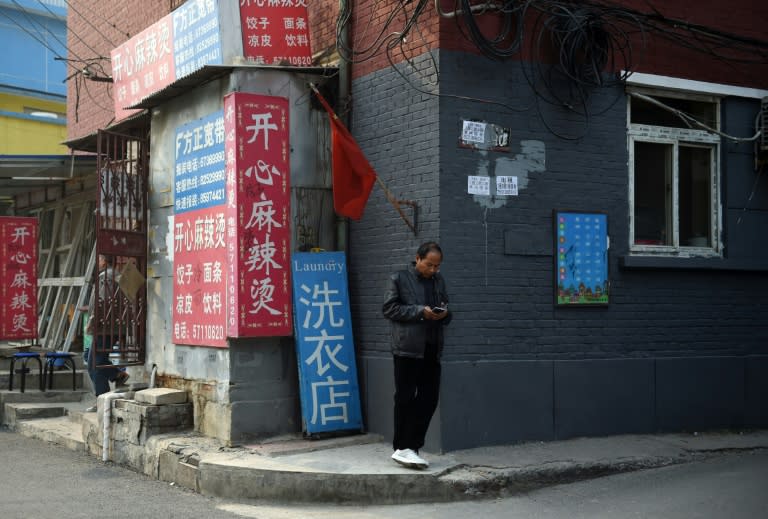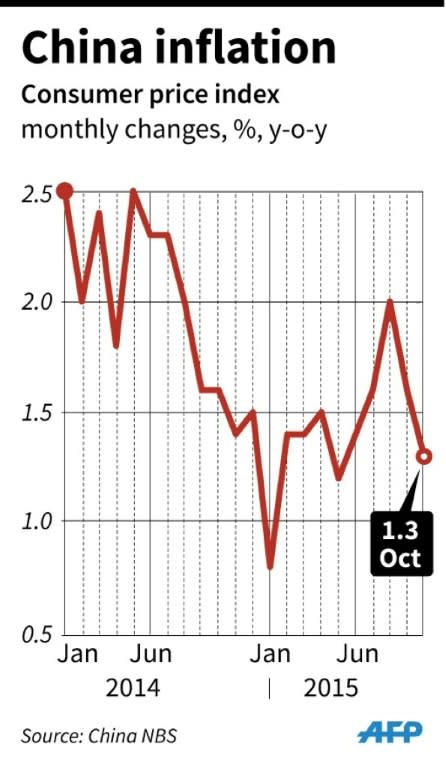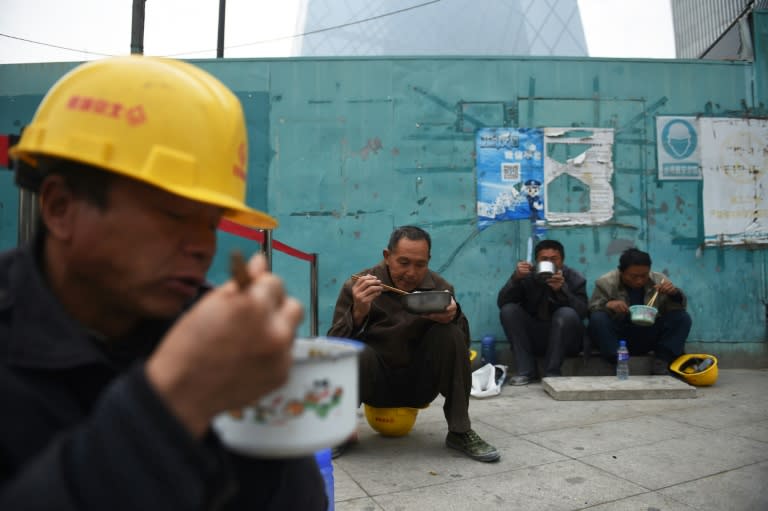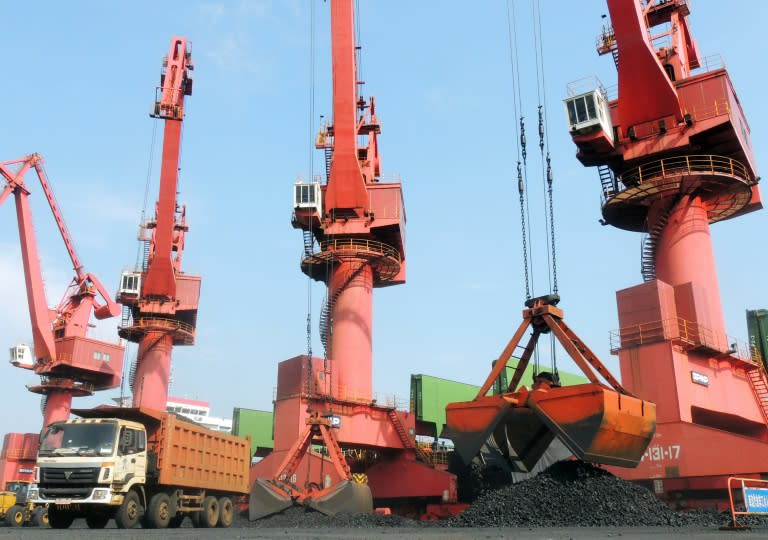Weak China inflation stokes fears over slowing demand
China's consumer price inflation fell to a five-month low in October, the government said Tuesday, in another sign of weak demand in the world's second-largest economy. China is a key driver of global growth but expansion slowed to its lowest rate in nearly a quarter of a century in 2014 and has continued to weaken this year. A year-on-year rise of 1.3 percent in the consumer price index (CPI) -- a main gauge of inflation -- released by the National Bureau of Statistics was the lowest since May and down sharply from 1.6 percent in September. It was also well below market expectations of 1.5 percent based on a survey of analysts by Bloomberg News. Moderate inflation can be a boon to consumption as it pushes buyers to act before prices go up, while falling prices encourage shoppers to delay purchases and companies to put off investment, both of which can hurt growth. "Deflation risks still remain in the economy. We expect deflation pressure will continue to be there," Claire Huang, China economist at Societe Generale in Hong Kong, told AFP. Authorities earlier this month pledged to accelerate reforms following a key Communist Party meeting, but analysts warn that more needs to be done to avoid a hard landing for the economy. The producer price index (PPI), which measures the cost of goods at the factory gate, fell 5.9 percent year-on-year in October, matching the figures for September and August, which represented a six-year low. Overcapacity in manufacturing has been a major drag on China's growth and analysts said the protracted declines in PPI boded ill for industrial prospects. It was "still too early" for signs of a rebound in industrial activity, Bank of America Merrill Lynch economists said in a note. Consumer inflation has been at or below 2.0 percent for all of 2015, while the drop in PPI -- a leading indicator for CPI -- was the 44th consecutive monthly fall. - Rate cuts - China is facing economic turbulence as it tries to transition its economy from years of super-charged growth to a more modest pace it has dubbed the "new normal". The troubles have sent waves of concern through stock markets around the world. Growth hit a 24-year low of 7.3 percent in 2014 and has slowed further this year, slipping to 7.0 percent in each of the first two quarters. In the July-September period the country logged its worst economic performance since the global financial crisis, with GDP rising just 6.9 percent. Last week saw the clearest signal yet it would lower its growth targets, with President Xi Jinping saying annual expansion of only 6.5 percent would be enough to meet its goals. Zhu Guangyao, a vice finance minister, said at a briefing Tuesday that China's annual economic growth "will reach 6.5 percent" over the 2016-2020 period. Both domestic and overseas demand have slackened, with official trade data at the weekend showing imports down nearly 19 percent in October, and exports falling almost seven percent. Vice Foreign Minister Li Baodong told the same briefing Tuesday that the world economic recovery was still "lacking momentum". "Asia-Pacific also faces challenges such as an unstable basis for growth, economic transition and divergent economic trends," he said. Last month, China cut interest rates for the sixth time since November last year and trimmed the reserve requirement ratio -- the amount of cash banks must keep in reserve -- to boost lending, and analysts expect more measures to come. "Today’s CPI opens the door wider for the PBoC (People's Bank of China) to ease monetary policy further through reducing (the) reserve requirement ratio and benchmark interest rates," ANZ Banking Group said in a research note. China's stock market closed down slightly on Tuesday following the inflation releases. The benchmark Shanghai Composite Index eased 0.18 percent to 3,640.49.





